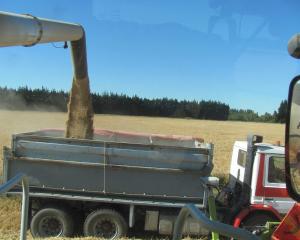
Under the new regulations, which came into force on Monday, dams need to be classified if they are 4m or more in height and store 20,000cu m of water.
The Otago Regional Council said its dam register lists 98 dams in Otago that would be affected by the new rules, and another 34 dams that were close to the threshold that would require further investigation.
At the end of March, Building and Construction Minister Chris Penk announced announced the National-led government was changing the threshold from 1m dam heights — as set by the previous government — to the new 4m mark.
Matakanui Station owner Andrew Paterson said Otago’s 132 dams likely affected by the new rules was "probably quite a reduction" from the number of dams that could have been affected if the government had stuck with the Labour government’s original rules.
"I think it’s a sensible move, but there are still dams that are going to be caught up in it that are at that 4m threshold that are very safe dams."
The regional council said under the new "nationally consistent risk-based approach" to dam safety, owners needed to determine if their dams met the threshold.
If they did, the owners would need to carry out a potential impact classification to assess whether the potential impact of a dam’s failure was low, medium or high.
A recognised engineer would be required to audit the classification.
The council said of the 132 potentially classifiable dams, 82 were in the Central Otago and Queenstown Lakes districts, and 45 were in Dunedin and the Waitaki and Clutha districts.
Its regional dam register showed 61 dams were owned by companies and councils and 71 dams were owned by private landowners.
Mr Paterson said he expected irrigation companies to be among those owners most affected by the changes, but a lot of work would have already been completed.
"I would imagine all of those dams — in preparation for the previous rules — would have already had that all done."
He said he understood dams that had a low potential impact classification would be all right as they were, but those that received medium or high ratings would require more work.
Most owners would have a sense of whether their dams would meet the threshold and require a classification, he said.
However, there could be questions around how to measure the height of a dam wall because farmers might have built a wall and then dug out the dam’s holding capacity below the wall.
The changed dam wall height threshold meant the rules no longer included duck ponds, stock-water dams, or on-farm irrigation infrastructure.
"We’ve got to a common sense point. There will be farmers that are still not happy with it, because a lot of farmers still don’t like the amount of regulation that we have, but at the end of the day, I think it’s a more sensible approach than where we were heading before."
Owners have until August 13 to provide the council with dam classification information.
Acting regulatory general manager Joanna Gilroy said that the council’s focus was on the implementation of the regulations and assisting dam owners to understand the steps they needed to take.














